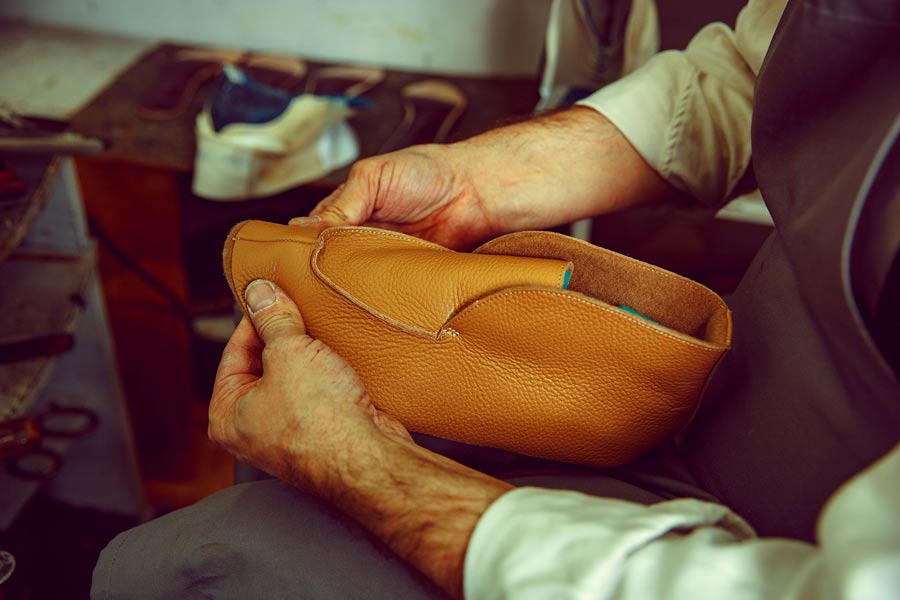
28 Jun What New Uses for Leather Are Emerging? Discovering Innovative Applications Beyond Fashion
Leather, a material steeped in history and tradition, is breaking the mold and finding its way into innovative applications far beyond the realms of fashion. From automotive interiors to cutting-edge consumer electronics, leather is proving to be as versatile as it is enduring. This exploration into non-traditional uses of leather reveals its potential to meet diverse functional and aesthetic needs in modern society.
Leather in Automotive Interiors
The luxury of leather in automotive interiors is nothing new, but its applications are becoming more innovative and widespread. Beyond just covering seats, leather is now a staple for door panels, steering wheels, and dashboard trims. Modern treatments and finishing techniques have evolved, allowing leather to withstand UV rays, temperature changes, and wear and tear much better than before. This adaptability makes it an ideal choice for enhancing the luxury, durability, and comfort of vehicles.
Leather in Interior Design and Architecture
Leather is carving out a significant niche in interior design and architecture, favored for its texture and richness that can’t be replicated by other materials. It’s being used in luxurious upholstery, innovative wall coverings, and striking decorative accents. From sleek, contemporary feature walls in corporate spaces to rich, tactile acoustic panels in homes, leather’s application in design is as expansive as it is impressive.
Leather in Consumer Electronics
In the realm of consumer electronics, leather is making an unexpected yet welcome appearance. It’s being used to craft elegant and protective cases, covers, and straps for smartphones, tablets, and even high-end headphones. Leather not only offers a tactile and luxurious experience but also brings durability and a classic aesthetic to everyday devices, setting them apart in a market dominated by synthetic materials.
Leather in Sporting Goods and Equipment
Leather continues to be a preferred material in sporting goods for its unmatched natural properties such as breathability, flexibility, and grip. It’s found in everything from high-performance athletic shoes to durable gloves and bespoke sports accessories. Its ability to conform to the user’s needs while providing comfort and enhancing performance makes it irreplaceable in sports gear.
Leather in Healthcare and Medical Devices
The healthcare sector is embracing leather for its practicality and comfort. Leather is being utilized in medical furniture upholstery, patient positioning aids, and even in some rehabilitation equipment. Its ease of cleaning and hypoallergenic properties, coupled with natural antimicrobial aspects, ensure it meets the stringent hygiene standards required in medical settings.
Leather in Sustainable Design
As the world shifts towards more sustainable practices, the leather industry is not being left behind. Innovations such as vegetable tanning and the use of natural dyes are making leather production more environmentally friendly. These advancements underscore leather’s role in sustainable design, emphasizing its biodegradability and status as a renewable resource.
Leather in Art and Sculpture
Artists and sculptors are turning to leather as a medium that offers both versatility and a unique narrative. Leather in art extends beyond traditional crafts and into avant-garde sculptures and installations, pushing the boundaries of this age-old material. These artistic endeavors highlight leather’s potential as a medium for contemporary creative expression.
Conclusion
The journey of leather from conventional fashion applications to innovative uses across various industries underscores its adaptability and enduring appeal. This versatile material continues to inspire new possibilities and applications, proving that it can evolve to meet modern needs while maintaining its rich heritage. Whether it’s enhancing the luxury of cars or the functionality of medical devices, leather’s potential seems only to be limited by the imagination of those who work with it. As we move forward, leather remains a prime example of how traditional materials can find new life in unexpected places, bridging tradition with innovation for future generations.


